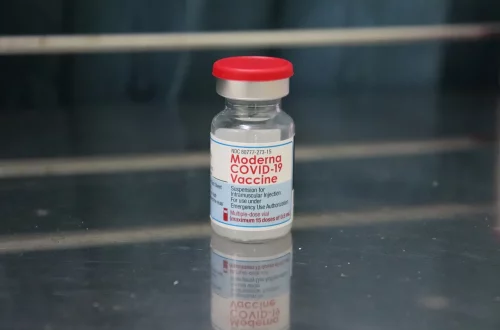
The Ultimate Forearm Workout Device for Strength and Endurance
In the pursuit of fitness, many enthusiasts focus on major muscle groups such as the chest, back, and legs. However, forearm strength is often overlooked, despite its significance in overall physical performance and daily activities. The forearms play a critical role in grip strength, which is essential for a variety of sports and exercises, including weightlifting, rock climbing, and martial arts. Additionally, strong forearms can enhance athletic performance and reduce the risk of injuries in the wrists and hands.
Integrating forearm workouts into your fitness regimen not only helps in achieving better grip strength but also contributes to improved endurance and stability. A well-developed forearm enhances your capability to perform complex movements and lifts, making it easier to progress in your training. Whether you are an athlete or just someone looking to boost your everyday strength, investing time in forearm conditioning can yield significant benefits.
In recent years, the market has seen a surge in innovative devices specifically designed for forearm workouts. These tools can help you target the muscles of the forearm effectively, ensuring that your training is both efficient and effective. From simple hand grips to advanced resistance equipment, the right forearm workout device can make a world of difference in your training regime.
Understanding the Importance of Forearm Strength
Forearm strength is a critical aspect of overall fitness that often goes unnoticed. Our forearms are involved in nearly every upper body activity, serving as the bridge between the upper arm and the hand. A strong forearm is essential not only for lifting heavy weights but also for performing daily tasks that require grip strength, such as opening jars or carrying grocery bags.
Moreover, forearm strength is particularly important for athletes. In sports like tennis, baseball, and football, the ability to grip and control equipment can significantly affect performance. For instance, a strong grip can enhance a tennis player’s serve or a golfer’s swing, leading to better results on the field or court.
Additionally, having strong forearms can help prevent injuries. Weak forearm muscles can lead to imbalances and strain on the wrist and elbow joints, increasing the risk of overuse injuries such as tendinitis or carpal tunnel syndrome. By strengthening the forearms, you create a more stable base, which can support the wrist and elbow, thereby reducing the likelihood of injury during intense physical activity.
Forearm workouts also promote better blood circulation and muscle endurance. The forearm muscles consist of both fast-twitch and slow-twitch fibers, which means they can benefit from both strength training and endurance workouts. By incorporating a variety of exercises that target these muscle fibers, you can improve overall muscular endurance, making it easier to engage in longer workouts without fatigue.
In summary, forearm strength is vital for both athletic performance and daily functionality. By making a conscious effort to train your forearms, you can enhance your grip strength, prevent injuries, and improve your overall fitness level. With the right forearm workout device, you can effectively target these muscles and reap the benefits of a strong, functional upper body.
Choosing the Right Forearm Workout Device
When it comes to enhancing forearm strength, selecting the right workout device is essential. There are numerous options available on the market, each designed to target the forearms in unique ways. Understanding the features and benefits of various devices can help you make an informed decision that aligns with your fitness goals.
One popular choice is the hand gripper. Hand grippers are compact, portable devices that allow you to perform resistance training specifically for the forearms and grip. They come in various resistance levels, making them suitable for beginners as well as advanced users. Hand grippers help improve grip strength by requiring you to exert force against the resistance, making them an excellent tool for building endurance and muscle mass.
Another effective option is the wrist roller. This device typically consists of a weighted bar attached to a rope, which you roll up and down using your wrists. Wrist rollers engage not only the forearm muscles but also the shoulders and core, providing a full upper-body workout. By incorporating wrist rollers into your routine, you can enhance your grip strength and improve muscle coordination.
For those looking for a more dynamic workout, forearm training machines are available at many gyms. These machines often include features that allow for various angles and resistance settings, enabling you to target the forearms from different positions. This versatility can lead to more comprehensive muscle development and better overall results.
In addition to these devices, resistance bands can also be utilized for forearm workouts. Bands offer a unique advantage, as they provide variable resistance throughout the range of motion. By attaching a resistance band to a stable surface, you can perform a variety of exercises that engage the forearm muscles, from wrist curls to reverse curls.
Ultimately, the best forearm workout device for you will depend on your fitness level, goals, and personal preference. Consider factors such as ease of use, portability, and the specific muscles you aim to target. Investing in a quality device can significantly enhance your training, leading to improved forearm strength and overall fitness.
Effective Exercises for Forearm Development
Once you’ve chosen a forearm workout device, it’s time to incorporate effective exercises into your routine. A well-rounded forearm workout should target all aspects of the forearm muscles, including flexors, extensors, and the grip.
One of the most straightforward exercises is the wrist curl. By using dumbbells or a barbell, you can perform wrist curls to strengthen the flexors of the forearm. To execute this exercise, sit on a bench with your forearms resting on your thighs, holding the weights with your palms facing up. Slowly curl the weights towards you, engaging the forearm muscles, and then lower them back down. Aim for three sets of 10 to 15 repetitions.
Another great exercise for forearm development is the reverse wrist curl, which targets the extensors. This exercise is similar to the wrist curl but requires you to hold the weights with your palms facing down. By lifting the weights towards your body and then lowering them, you will effectively engage the opposing muscle group, promoting balanced development.
Incorporating farmer’s walks into your routine can also significantly improve grip strength. This exercise involves holding heavy weights in each hand and walking a certain distance. Not only does this work the forearms, but it also challenges your core and stability. Aim to walk for 30 seconds to a minute while maintaining a strong grip on the weights.
Lastly, consider adding plate pinches to your forearm workout. This exercise requires you to hold two weight plates together using only your fingers and thumb. The goal is to maintain the pinch for as long as possible. This simple yet effective exercise can drastically improve grip strength and endurance.
Incorporating these exercises into your weekly training routine will help in developing stronger forearms, enhancing your overall performance in various physical activities. Consistency is key, so aim to target your forearms at least two to three times a week for optimal results.
Maintaining Forearm Health and Recovery
While focusing on building forearm strength, it’s equally important to prioritize recovery and health. Overworking the forearms can lead to strain and injuries, which can hinder your progress. Therefore, incorporating proper recovery practices into your training routine is crucial.
One effective way to promote recovery is through stretching. Regularly stretching the forearm muscles can improve flexibility, reduce tension, and prevent tightness. Consider incorporating stretches such as wrist flexor and extensor stretches into your routine. These stretches can be performed before and after workouts to prepare the muscles for exertion and promote recovery afterward.
Additionally, practicing self-myofascial release techniques, such as using a foam roller or massage ball, can be beneficial. Rolling out the forearms can help alleviate tightness and increase blood flow to the muscles, aiding in recovery. Spend a few minutes each week focusing on the forearms, especially after intense workouts.
Hydration and nutrition also play significant roles in muscle recovery. Ensure you are consuming adequate amounts of water and nutrients to support muscle repair and growth. Foods rich in protein, healthy fats, and carbohydrates can help facilitate recovery after workouts.
Lastly, listen to your body. If you notice any signs of discomfort or pain in your forearms, take the necessary time to rest and recover. Ignoring pain can lead to more severe injuries that may require extended recovery periods.
In conclusion, while building forearm strength is essential, maintaining forearm health is equally important. By incorporating recovery practices and listening to your body, you can continue to progress in your training without the risk of injury.
**Disclaimer:** This article is not intended as medical advice. If you have any health concerns or pre-existing conditions, please consult with a healthcare professional before starting any new exercise regimen.




